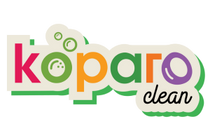
Chemicals you should avoid in baby products
Chemicals you should avoid in baby products
As new mothers, we get paranoid making sure our babies are protected and absolutely safe in whatever they do. We want what’s best for our children. The obvious choice would be to opt for a gentle, natural range of products designed especially for baby’s skin, right? But are we absolutely sure about the ingredients that go into these products? Today on The Clean Slate, let’s find out what chemicals can be found in baby products and how to avoid them
Why should you look out for these chemicals?
According to Madesafe, avoiding toxic chemicals is particularly crucial when it comes to protecting our babies and children, who are uniquely vulnerable to toxic chemicals. They aren’t just little adults; their immune, neurological, endocrine, and entire bodily systems are still developing, and studies show that even small exposures during critical windows can lead to breast cancer, infertility, learning disabilities, and other serious health problems later in life.

Don’t get click baited by these labels:
Even if the label says ‘hypoallergenic’, ‘natural’, ‘organic’; it does not mean it’s safe for your baby. Most of these labels are marketing gimmicks so that you pick up the products from the market without hesitation.
Chemicals you should look out for
As a conscious parent, you should always take an extra minute to glance over the ingredients before buying a baby care product. Here are some chemicals you should be wary of:
-
Formaldehyde
According to Parents.com Formaldehyde is a known carcinogen (it has been linked to nasal squamous cell cancer) and a skin irritant that can cause allergy-like reactions including watery, burning eyes and throats, stuffy noses, and skin rashes.
Found in: Baby personal care products like shampoo and liquid soaps
Ingredient terms to avoid: Formalin, Formic aldehyde, Methanediol, Methanal, Methyl aldehyde, Methylene glycol, Methylene oxide, quaternium 15, bronopol, diazolidinyl urea, DMDM hydantoin, imidazolidinyl urea, and sodium hydroxymethylglycinate.
-
Phthalates
Phthalates are endocrine disruptors that are linked to reproductive malformations in baby boys, reduced fertility, developmental disorders, asthma, and increased allergic reactions. They are found in almost every product so you should look for labels that say ‘Phthalates-free’. Madesafe recommends looking for baby bottles with nipples made from hospital-grade silicone.
Found in: Cleaning and Personal Care products for babies
Ingredient terms to avoid: phthalate esters, Dimethyl phthalate, Butyl cyclohexyl phthalate, Butyl benzyl phthalate, n-Octyl n-decyl phthalate.

-
Flame Retardants
A type of flame retardant called polybrominated diphenyl ethers (PBDEs) is particularly worrisome. Parents.com says that exposure to even small doses at critical points in development can damage reproductive systems and affect motor skills, learning, memory, and hearing. Avoid foam baby products and switch to 100% cotton or wool bedding, or place organic cotton or wool topper on top of a regular mattress.
Found in: Car seats to toys to clothing and even furniture.
Ingredient terms to avoid: polyurethane, polybrominated diphenyl ethers (PBDEs)
-
Sulfates
According to Healthline, sulfates aren’t necessarily unsafe, but they can cause temporary irritation. If you notice any redness, dryness, or itching after bath time, check your baby’s products for sulfates and consider switching to a sulfate-free wash. They may be contaminated with 1,4-dioxane, which is linked to cancer. It’s also harsh on sensitive skin, especially in concentrations greater than 2%. When shopping, look for labels printed with “sulfate-free” printed.
Found in: Bath and cleaning products
Ingredient terms to avoid: Sodium lauryl sulfate (SLS), sodium laureth sulfate (e.g. SLES, sodium lauryl ether sulfate), ammonium laureth sulfate (ALS), sodium stearyl sulfate sodium lauryl sulfoacetate (SLSA), sodium coco sulfate.

-
Bisphenol A (BPA)
BPA is linked to early puberty in girls and phthalates are linked to low testosterone and to male reproductive problems. In recent years, multiple studies have revealed that babies consume a shocking number of microplastics every day.
Found in: Baby bottles, water bottles, or bottled formula
Ingredient terms to avoid PVC, p,p-Isopropylidenebisphenol, 2,2-Bis(4-hydroxyphenyl)propane
While choosing safe and chemical-free products for your baby may seem difficult, it is not impossible! Always know your options and make your choice as a conscious, well-aware consumer. We hope this article gave you some insight into baby products. If you need all-natural cleaners for your home have are completely baby-safe, here is Koparo’s Household range:









